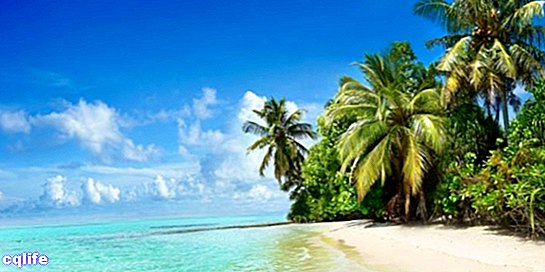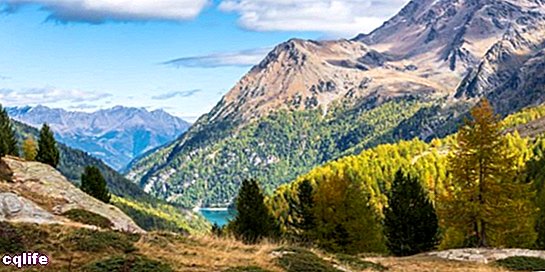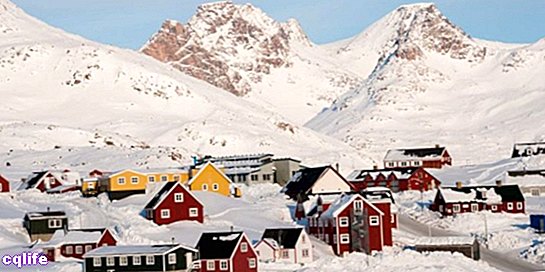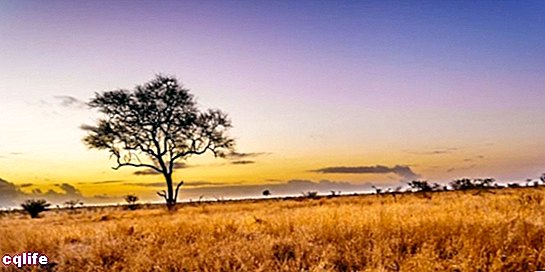- What are the natural regions of the world?
- Orographic natural regions
- Natural climatic regions
- Phytogeographic natural regions
We explain what are the natural regions of the world and what are the orographic, climatic and phytogeographic natural regions.

What are the natural regions of the world?
In geography, a natural region It is an area of the earth's surface that has its own, homogeneous and distinctive physical characteristics, such as the relief, the weather, the hydrography, the vegetation, the nature of the I usually and other similar items. Seen this way, the entire world comprises a set of identifiable natural regions.
Now, the classification of the natural regions of our planet depends on the type of physical characteristics that we take into consideration, which generally tend to be the following:
- Orographic regions, if we take into account the relief of the region.
- Climatic regions, if what is considered is the predominant climate.
- Phytogeographic regions, if what we consider is the majority type of vegetation.
We will see each of these categories separately below.
Orographic natural regions

Considering the relief of the regions, that is, the type of terrain features that predominate in it, we can talk about:
- Mountainous regions, in which the great elevations of the terrain predominate, being able to reach several kilometers in height and covering different climatic bands, due to the effect of the change in height. Examples of these regions are: the South American Andean region, the European Alps region, the Himalayan region in Asia, etc.
- Regions of plateaus, characterized by elevations of the land devoid of top, but have a plain at the top. These plateaus may be more or less high, and may or may not be part of mountain ranges and mountain complexes. Examples of these regions are: Venezuelan Guiana, the Andean highlands, the Tibetan plateau, etc.
- Regions of hills, that is to say, of not very pronounced undulations of the land and of very little height. Examples of these regions are: the Midlands region of England, the Lisbon region in Portugal or the Connors Hills in Australia.
- Regions of plains or plains, in which the terrain is simply flat, flat, without elevations. Many times these plains can be depressions, that is, plains below sea level, or they can also be found at the top of mountain ranges, as in the great plateaus. Examples of these regions are: The North American Great Plain, the Great Central European Plains, the Argentine pampas, etc.
Natural climatic regions

If instead of the relief we observe the climate of each of the regions, we will notice that the climatic variants depend to a great extent on the latitude terrestrial, since the movement of the planet tends to create fringes of temperature Y atmospheric pressure more or less homogeneous, which are called climatic zones. These are:
The tropical zone (0 ° to -23.5 ° latitude N and S). Located in the equatorial region, that is, above and below the equator, extending to the beginning of the tropics, it is the warmest and wettest area on the planet, since solar radiation affects directly and vertically all year round, generating a greater evaporation of the water. Lacking seasons, it usually presents a rainy season and a dry season.
In this strip the following climatic regions are presented:
- Humid tropical climate, with abundant rains and continuous heat throughout the year, or at least for almost nine and a half months.
- Semi-humid climate, with abundant rains between 9 and 7 months a year, or between 7 and 4 months a year, depending on its geography. The rest of the year tends towards drought.
- Semi-arid climate, with a tendency to drought, as it presents rainfall between 4 and 2 months a year, thus tending to desertification.
- Arid climate, typical of desert and xerophilic areas, presents between 2 and 0 months of rain per year.
The subtropical zone (23.5 ° to 40 ° latitude N and S). Located in the next strip, below and above the line of the tropics, it is an intermediate strip that has warm summers in which the solar radiation is intense, and humid and cool winters with less radiation. Due to the action of the winds, it is a much less humid area, which is why it contains the vast majority of the deserts.
The climatic regions of this strip are the following:
- Dry subtropical climate, which tends to be arid throughout the year, but receives abundant rains in winter, it is a climate with a lot of solar presence.
- Humid subtropical climate, better known as the Mediterranean climate (because it is characteristic of the coasts of that sea), it is a very stable climate with hot summers and wet and cool winters, considered among the best climates in the world.
- Always humid subtropical climate, also called eastern climate (because it abounds in the regions of the Asia), presents its maximum rainfall in the summer, making it warm and humid, while the winter is dry and cold.
The temperate zone (40 ° to 60 ° latitude N and S). It has average temperatures much colder than in the tropics, since it receives solar radiation in a much more oblique and partial way. In this region the seasons present their characteristic differentiation and differ markedly from one another throughout the year. Its characteristic climates are much more uniform in terms of annual precipitation and are as follows:
- Typical temperate climate, with hot summers and cold winters, being able to reach frost. The humidity it depends on the hydrographic presence in the region, and otherwise they tend to relative drought (400mm per year).
- Subhumid temperate climate, also called tropical altitude, has rainy summers and dry winters, and is typical of the mountainous regions, the Indian Ganges or the monsoon regions of Asia.
- Humid temperate climate, typical of the middle latitudes and presents humidity and rains throughout the year, due to its proximity to the sea. It has the smallest difference in climates between day and night and between summer and winter, due to its large amount of humidity.
- Oceanic climate, also called maritime or British, is typical of the islands and regions near the sea in the temperate band with a lot of wind, for which it has a large amount of annual precipitation and an oscillation of 10 ° between cold winters and cool summers.
The polar or cold zone (60 ° to 90 ° latitude N and S). It is the coldest climatic band on the planet, since solar radiation hits almost at ground level. In them are the respective planetary poles, covered with eternal ice, and in general they include dry and icy climates, called polar climates.
Phytogeographic natural regions

Considering the constitution of the predominant vegetation on the planet's surface, we can distinguish between the phytogeographic regions, which have a notorious importance in the economy and in the biology. These regions are:
- Scrublands, typical regions of dry climate, whose plants They are usually spiny, small in size and with thick green leaves. Xerophilous flora and species with deep and long roots are also present. Some typical species of the region are carob, rosemary, thyme, fig, olive, almond, cardón, cují, among others.
- Chaparrales, regions of dry climate in summer and cold in winter, it is a ecosystem of heaths, shrubs and short-lived plants, with seeds adapted to extreme temperatures and deep roots. The vegetation tends to be rather sparse, very sparse.
- Bed sheets, typical regions of intertropical plains with summer rains, in which the vegetation forms long grasslands of grasses that turn yellowish as the drought arrives. They are typical regions of the farming extensive (sugar cane, rice, corn, cotton, etc.) and the cattle raising grassland.
- Woods, adapted to different temperate and subtropical climates, are regions in which trees of medium and high height predominate, with thick trunks and deciduous leaves, so the soil tends to be covered with organic material decomposing. They can be more or less leafy and more or less thick, depending on the climatic and humidity conditions, and are usually very conducive to logging.
- Jungle humid, regions typical of humid and warm climate, present abundant and exuberant vegetation, with several vegetal floors, in which a significant percentage of the biodiversity planetary. Tall trees with many branches, with evergreen and leafy leaves, as well as climbing plants, parasites and epiphytes, abound.
